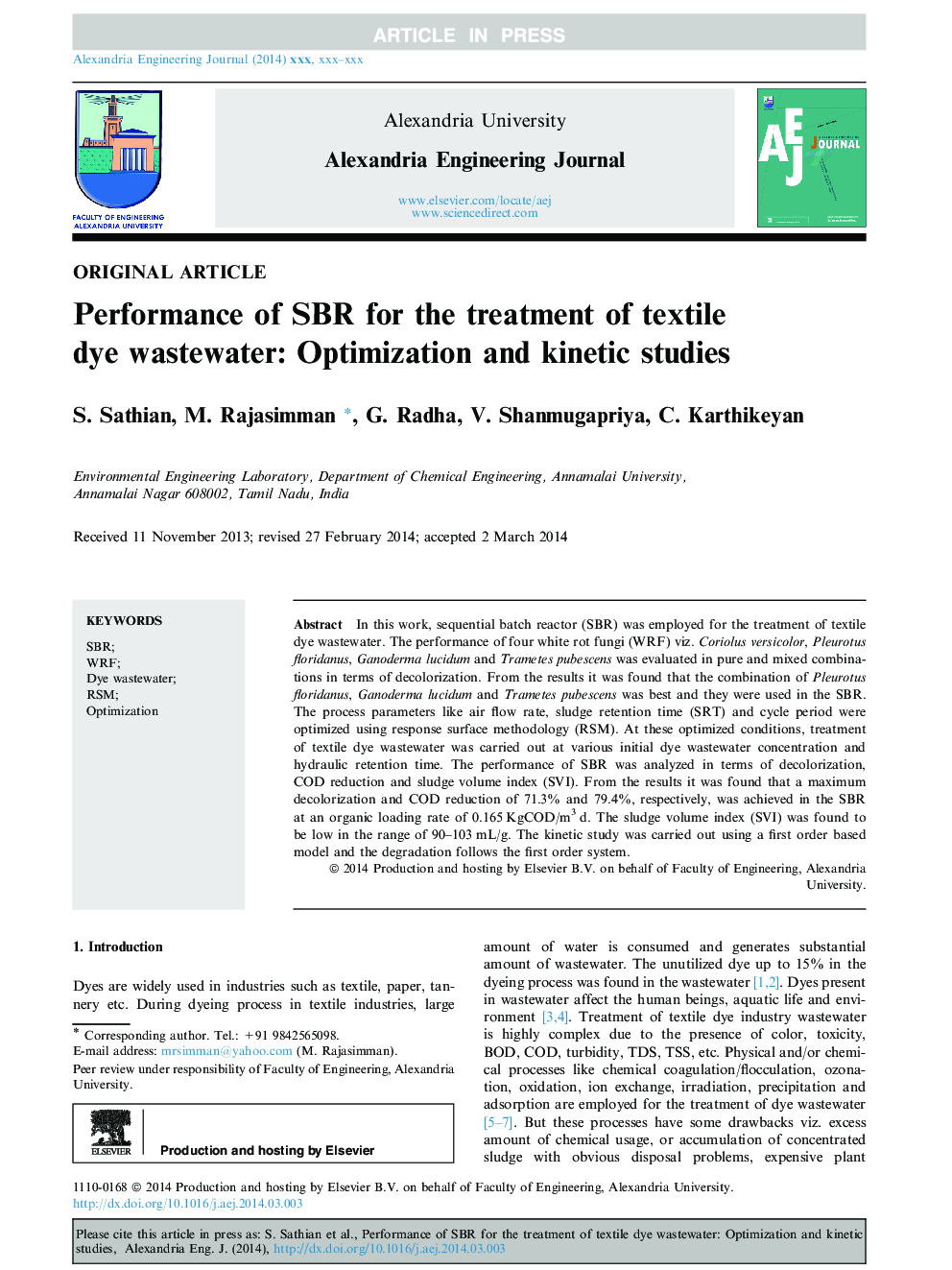| Article ID | Journal | Published Year | Pages | File Type |
|---|---|---|---|---|
| 816219 | Alexandria Engineering Journal | 2014 | 10 Pages |
Abstract
In this work, sequential batch reactor (SBR) was employed for the treatment of textile dye wastewater. The performance of four white rot fungi (WRF) viz. Coriolus versicolor, Pleurotus floridanus, Ganoderma lucidum and Trametes pubescens was evaluated in pure and mixed combinations in terms of decolorization. From the results it was found that the combination of Pleurotus floridanus, Ganoderma lucidum and Trametes pubescens was best and they were used in the SBR. The process parameters like air flow rate, sludge retention time (SRT) and cycle period were optimized using response surface methodology (RSM). At these optimized conditions, treatment of textile dye wastewater was carried out at various initial dye wastewater concentration and hydraulic retention time. The performance of SBR was analyzed in terms of decolorization, COD reduction and sludge volume index (SVI). From the results it was found that a maximum decolorization and COD reduction of 71.3% and 79.4%, respectively, was achieved in the SBR at an organic loading rate of 0.165Â KgCOD/m3Â d. The sludge volume index (SVI) was found to be low in the range of 90-103Â mL/g. The kinetic study was carried out using a first order based model and the degradation follows the first order system.
Keywords
Related Topics
Physical Sciences and Engineering
Engineering
Engineering (General)
Authors
S. Sathian, M. Rajasimman, G. Radha, V. Shanmugapriya, C. Karthikeyan,
